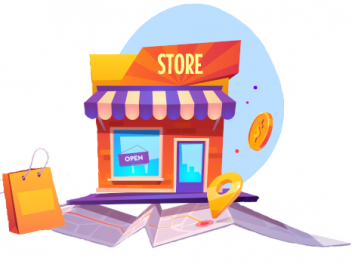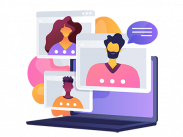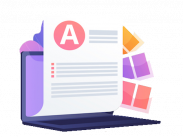In this article we’ll look at what Local SEO is and how to improve local SEO results. As 92% of searches are done on Google (Statista, June 2021), we'll focus on that, but the general information is applicable for Bing or other search engines.
TABLE OF CONTENTS
WHAT IS LOCAL SEO
Local SEO (search engine optimization) is the process of optimizing websites and web pages of businesses which supply to a local area, as opposed to nationally or internationally. These tens to be small businesses like barbers, vets, beauticians – the sort of places that tend to have a physical walk-in address and need to raise their business profile in a local area.
Local businesses rely less on building backlinks to their websites to build authority and more on customer reviews and profiles in business directories such as Yelp to increase their online visibility.
That said, local SEO should not be considered instead of but as well as regular SEO, such as using appropriate keywords, blog posts to build trust and demonstrate authority, linking to social media such as Facebook and Twitter for greater entity and business visibility, ensuring the website is speed optimised, is optimised for mobile devices, link building internally and for inbound links, and so on, all still play a part.
GOOGLE LOCAL SEO TECHNIQUES
In Google searches, local listing results are shown to searchers in one of two places.
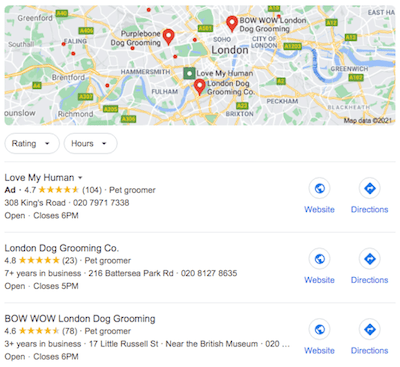
3 PACK
These appear in the flow of search engine results pages (SERP) and typically list 3 local businesses, hence the name 3 pack, although more local results are increasingly being seen in this pack.
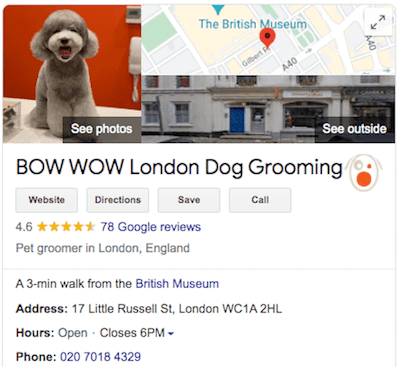
Knowledge Panel
These appear in the sidebar of the SERPs page and usually appear if you are searching specifically by name for a business, rather than a more vague search such as 'xyz near me', and is known as the knowledge panel.
Both are linked to Google maps for location and direction details.
HOW TO DO LOCAL SEO EFFECTIVELY
There are some differences between the SEO done for local businesses and that done for non-local ones. Local SEO, as we saw above, has the benefit of additional placements in SERPs, and whilst local businesses can also access backlinks and keyword based rankings as mentioned above, knowing how to do Local SEO effectively means understanding and making use of the specific opportunities for local organic results and rankings specific for the local algorithm.
GOOGLE BUSINESS PROFILE (formerly Google My Business)
When learning how to improve local ranking, Google Business Profile, (which until recently was known as Google My Business) is an essential tool to help enhance visibility. It is provided free by Google and it allows you to submit your business details for inclusion in local searches, once it goes through their verification process..
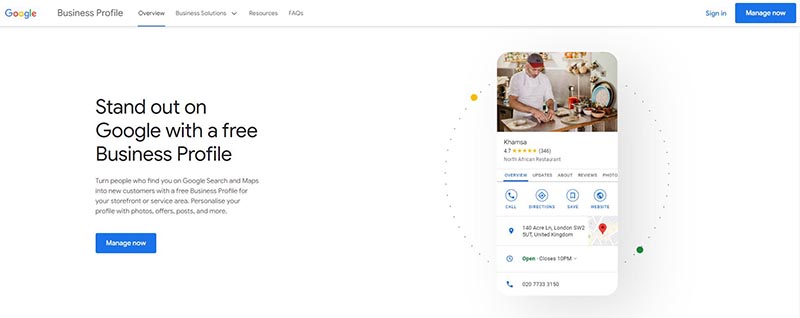
In order to use Google Business Profile (GBP) it's crucial you have your NAP – that's Name, Address, Phone Number for the business. And this information should be on your website – in the footer is probably best, so it appears on every page.
NOTE - the NAP must always be written the EXACT same way on your website, in your GBP, on other websites such as customer review sites, on directory sites and in every citation. This means literally down to the last dot and comma – for example, use Street or St. but ALWAYS use the EXACT SAME one everywhere.
When deciding on keywords for your GBP listing, the best practice is to include your GMB Category and your location i.e. Accountant in Westminster. This should appear in descriptions, image titles and wherever appropriate, but NOT necessarily in the business name (see below).
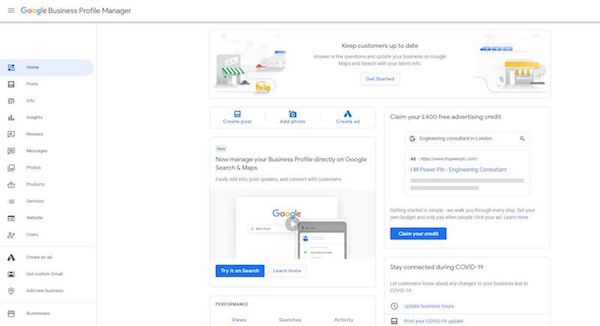
NAME
Use your real full business name – if you try to optimize it by adding local keywords or location that don't actually belong in the real, registered name, Google may penalise you.
ADDRESS
Give longitude and latitude coordinates too for your business address - use GeoSetter (Windows only) or GeoImgr
PHONE NUMBER
Ideally give a local number rather than a mobile if possible.
OPENING HOURS
Keep your business hours updated, and especially for public holidays like Easter, Christmas etc.
CATEGORY
If your category isn't listed, check what your competition is using via a Google local search around your keywords. Add secondary Categories under the Info link in the sidebar.
SERVICE
Add several services, and use keywords and location.
SERVICE DESCRIPTION
Use the same local keyword and location as used in the Service heading, and place it early in the text. Also it's important to use a unique Service description for each Service, don't just copy/paste the same one to all.
BUSINESS DESCRIPTION
Combine Category, Service and location keywords, but avoid being spammy
PHOTOS
Upload a logo, cover photo, team photo and film
Photo sizes is 1200 x 900px. Make sure they are high-quality.
The more photos the better – at least 3 interior, 3 exterior, 3 team, 3 products.
Image titles and descriptions should include business name, and keywords with category, services, location.
Add geotagging longitude and latitude using GeoSetter or GeoImgr to all the photos.
ADD A POST
You have the option of adding posts for - Update, Event, Offer, Product
Post with consistency and keep posts up to date.
For the Title and Photos, use keywords and set an end date in the future, otherwise posts expire in 7 days
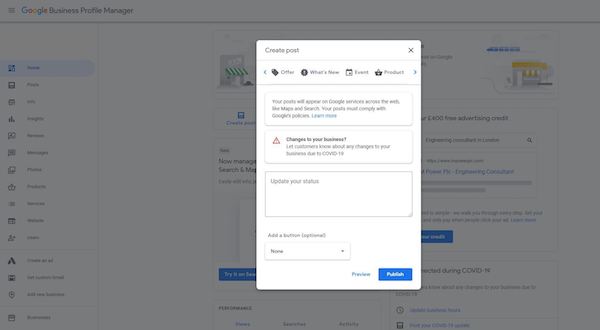
CREATE A FILM
Create a 360 degree film of your business to put on your Google Business Profile. This is not essential but it will certainly help in improving local search results ranking for your website, as video has been found to be a huge converter. And a video can be especially good for those who receive customers on their premises, like restaurants, and shops. You can hire someone to make a film for you, or hire a camera from Google and do it yourself, or use your Android or iOS mobile with an app.
POST REGULARLY
Post consistently. Post every day, even several times a day. Google wants you to be active on their platform and wants to see recent photos, films, reviews, and so on. Google actively promote new posts and you'll usually see a spike in traffic in your analytics soon after you've uploaded a new post.
LOCAL SEO RANKING FACTORS
The ranking factors that Google uses for ranking a local business in SERPs includes:
PROXIMITY
The most important local search ranking factor is proximity. Google will list the closest business corresponding to the search query first.
Ensure your address is included on your website and GBP to make sure you don't miss out on this crucial Local SEO ranking factor.
CATEGORY
Category is obviously also an important Local SEO ranking factor. The category listed in your GBP profile needs to match the local keyword being searched in the Google searches.
ON-PAGE SEO SIGNALS
On-page SEO signals are organic on-page signals on your website and web page. They include keywords and content, which give an indication to search engines what your web page, and therefore business, is about. See below on how to optimize Local On-page SEO.
ON-PAGE OPTIMIZATIONS
On-page SEO optimization includes the correct organic use of keywords and content to indicate to search engines what your web page is about. As for non-local SEO strategies, the right keyword and their correct placement is important for how to improve local search ranking.
For successful Local SEO on-page optimization, ensure your website and web pages follow these guidelines:
- have NAP in footer of every web page
- on your homepage include location and category keywords as used in your GBP
- on all website images include business name and location in the alt text and anchor text
- create a web page called 'business category in location' i.e. Accountant in Westminster (as you've found appropriate through your keyword research too) and include the following on that page:
- page title tag and heading (H1 tag) – use 'business category' in 'location' keywords
- paragraph with blurb which includes GBP additional categories keywords
- your business address and phone number
- an embedded Google Map
- hours of operation as listed in GBP - day by day
- link to every one of the major citation sites where you are listed
- a section for 'Proudly Serving… ' in which you list areas and include links to that area. These area links might be to important landmarks, the town hall, historical features, something that identifies the area i.e. Westminster Town Hall
- photos of your premises – add image title and alt text which includes name and location
- make a Youtube video and name it 'business category in location'
MAINTAINING YOUR GOOGLE BUSINESS PROFILE
Google, like all platforms, likes people to use their services as much as possible, so be active on your Google Business Profile account if you want improve Local SEO results.
Post regular posts with offers or events, update photos, makes sure to change opening hours over holidays and reply to reviews and comments. Think of it like another social network.
The more active you are on GBP the more likely you will be rewarded by Google with higher rankings or having your details promoted more often.
CITATIONS FOR LOCAL SEO
Citations are online mentions of your business details – name, address, phone number. These listings can be in business directories, on websites, on social media platforms, in author profiles on guest blogging posts, in podcast guest listings and so on. Anywhere where your business details are set out in a business listing.
Often free they are a great way of to improve Local SEO results. When completing entries remember to always use the EXACT same NAP as on your website and in your GBP account.
Try to ensure that local citation links are clickable, and link back to your website.
Extensive lists of citation sites for Local SEO can be found at:
Whitespark
BrightLocal
My Local Forum
Semrush is an SEO tool with many different uses, and amongst these is a listings management tool which will let you automatically list on a number of platforms, making the whole process a lot faster.
Not having the EXACT same NAP in all your citations may impede your efforts in Local SEO, so doing a citation audit can be useful, to change all details to be the same.
Unless your business is new there could be hundreds of citations out there, many of which you could have forgotten about, so although you can do a citation audit manually, in some cases this may be a real headache. Luckily there are tools to help with this:
BrightLocal citation tracker
Moz tools listings checker
LOCAL SEO REVIEWS & RATINGS
Positive reviews and ratings are amongst the most important Local SEO ranking factors which influence potential customers and help in how to improve Local SEO results.
Forbes found that 84% of people trust online reviews as much as if they were a personal recommendation from a friend.
Encourage past clients to leave a review. To make it easy for them, provide a simple link which they can click on to be taken directly there. A link is available from within GBP or alternatively from Whitespark.
GETTING LOCAL SEO REVIEWS
When you ask customers for a review give a reason – it's been found that even a silly reason gets better results than no reason at all i.e. it helps other local customers like you to find us, and we'd be very grateful for it.
Note – its against Google policy for you to incentivise reviews by giving a discount or a freebie. But you can incentivise your staff for every review they bring in. You can offer a staff bonus, and it's fine for your staff to tell customers that they will get a bonus if the customer leaves a review. This also appeals to people's natural nature of wanting to help others and feeling magnanimous.
It's usually best to ask for a review in person or on the phone. And the best time is just after they have complimented you or offered an indication of a positive experience around working with you. Follow up with an email providing a link direct to where they can leave the review.
Some people find it hard to ask in person, and it's also ok to ask via email. You won't have the advantage of catching them when they are expounding your virtues, but it's been found that if you send an email request between 1pm-3pm that people are more likely to follow through by about 20%. Include a link to the review page.
If for some reason you don't receive a review after a few days from someone you felt sure was happy with your work, follow up with an email letting them know that they can just leave a star rating rather than a written review.
When you do get reviews, respond to each one – whether positive or negative.
FINAL TIPS ON HOW TO IMPROVE LOCAL SEO RESULTS
Local SEO, like all SEO, can take time to become effective, so be patient and continue building your citations and your online profile even if you don't see results straight away.
Make sure your website also conforms to general SEO good practice, like mobile responsiveness, fast page load speeds, proper search engine indexing, correct meta data.
Use analytics tools to track your performance as well as keeping an eye on your competitors performance, keywords and ads.
The most important steps for how to improve Local SEO results is to optimize your citations and keep posting on your website and on social media to build awareness of your products and services, and to build a brand.
How To Improve Local SEO Results July 2022
